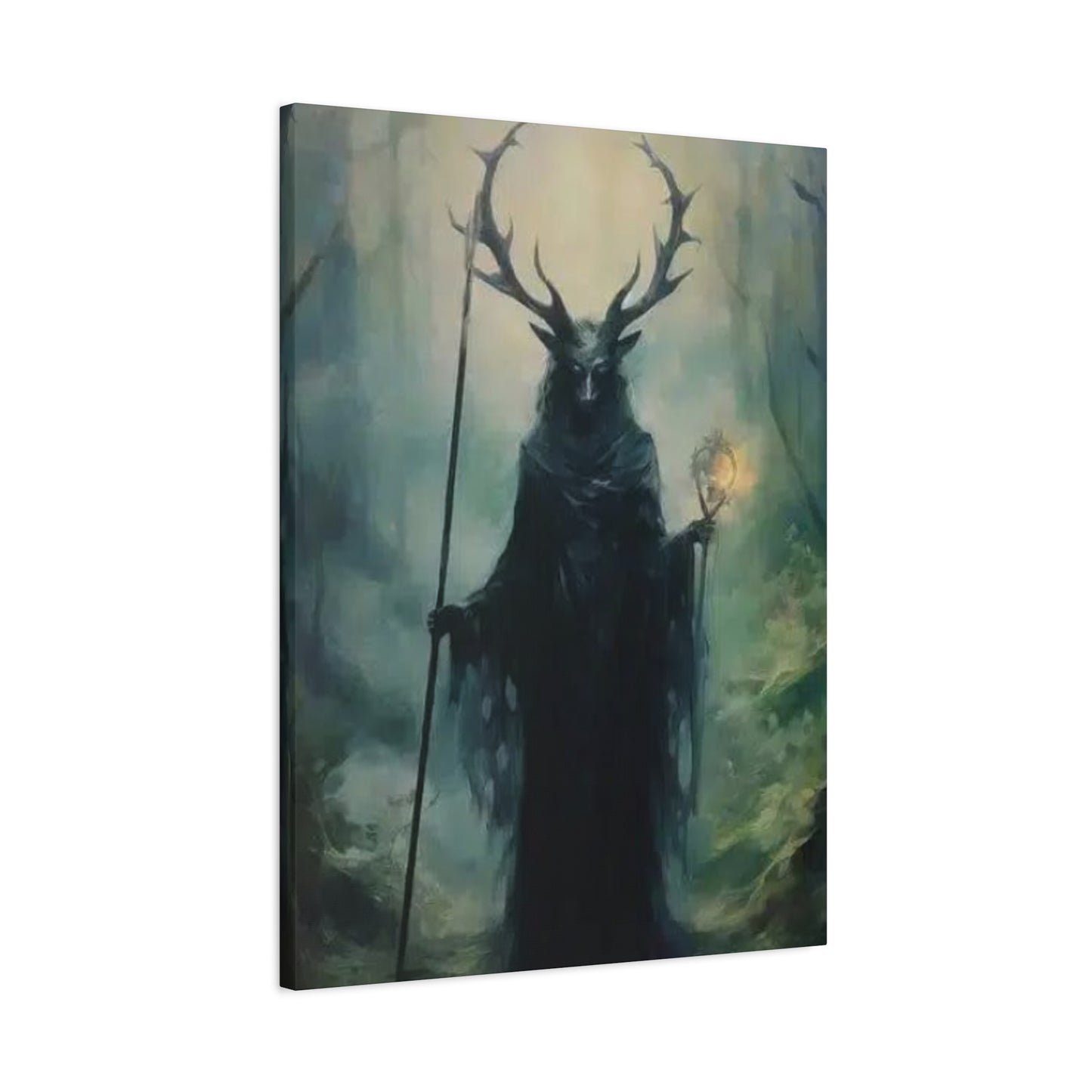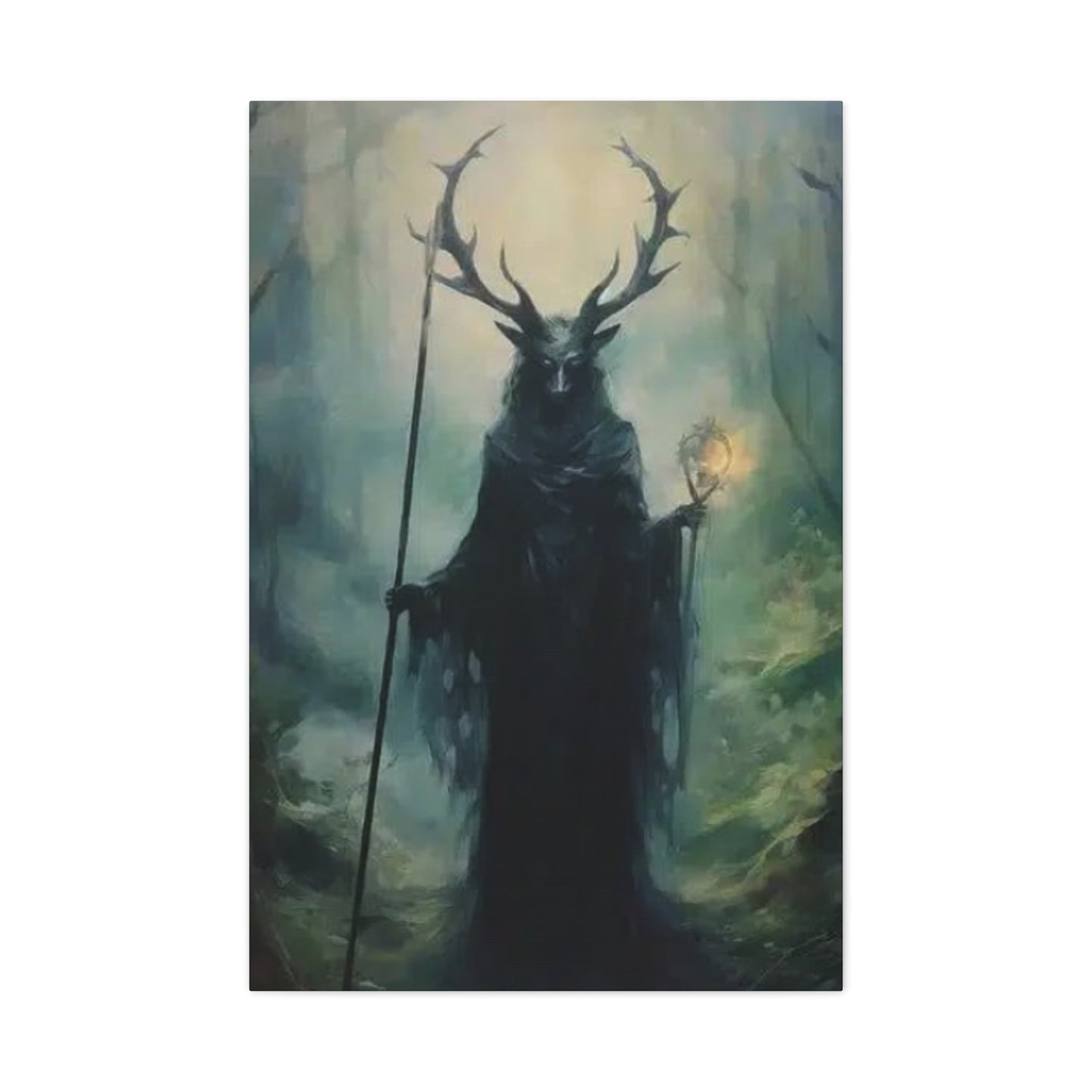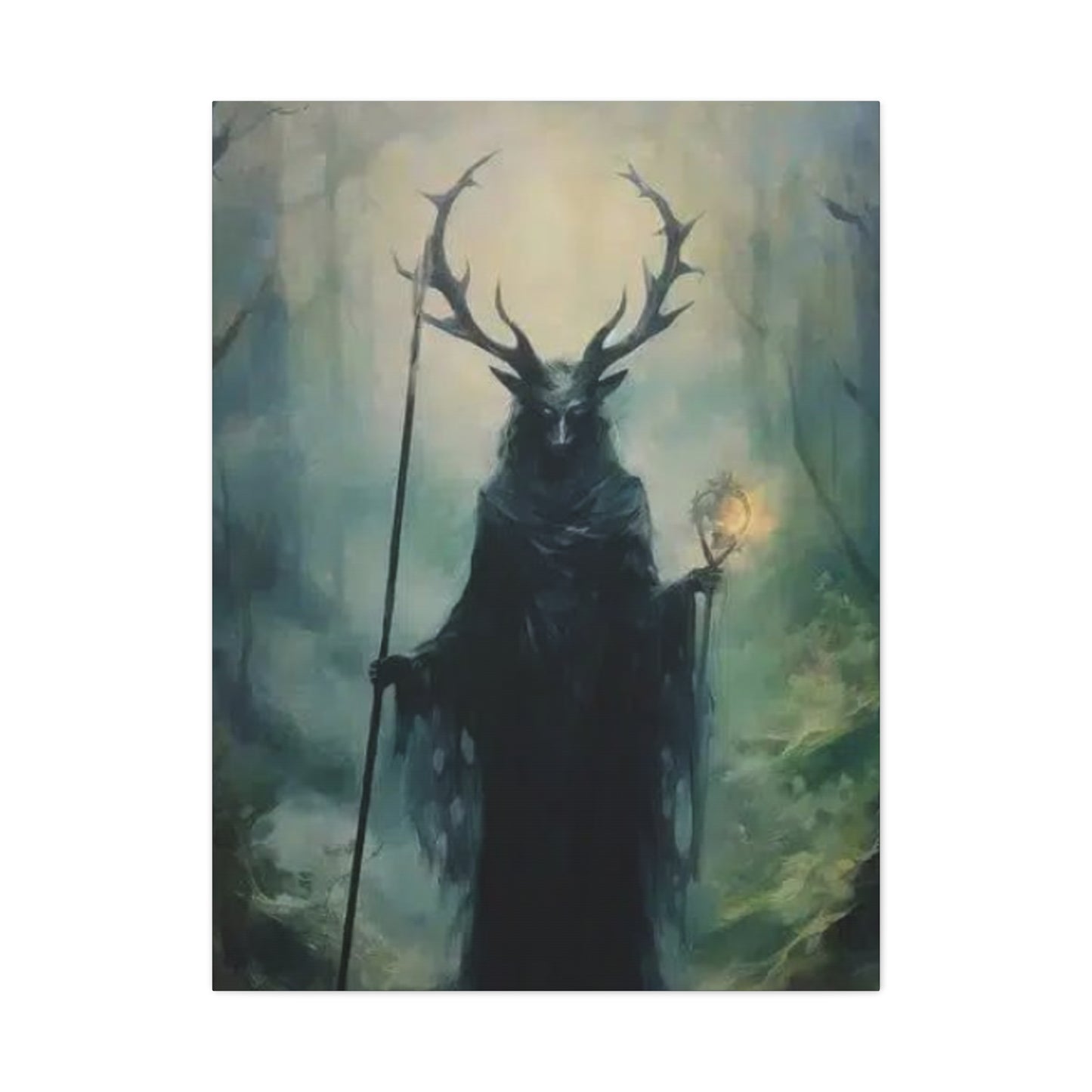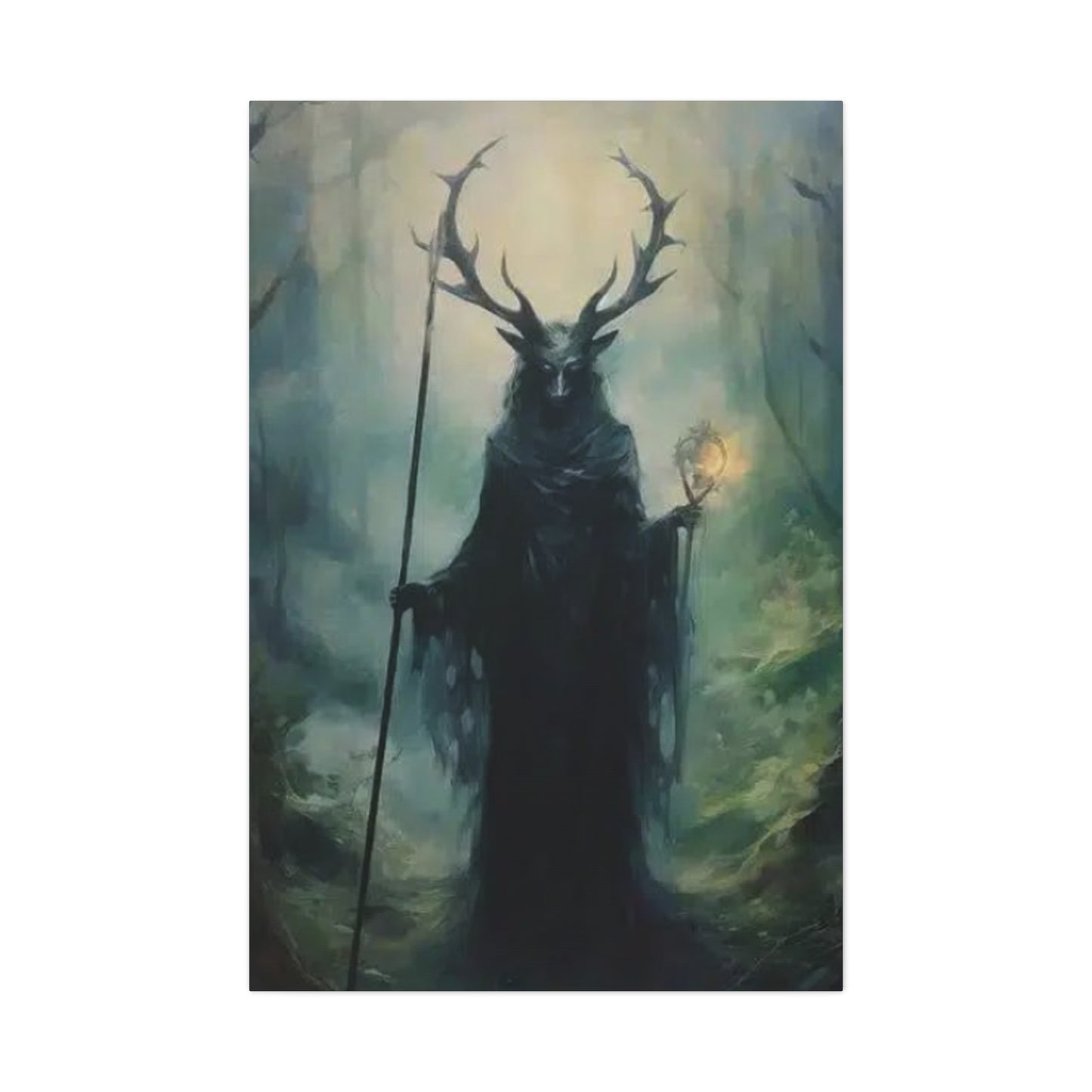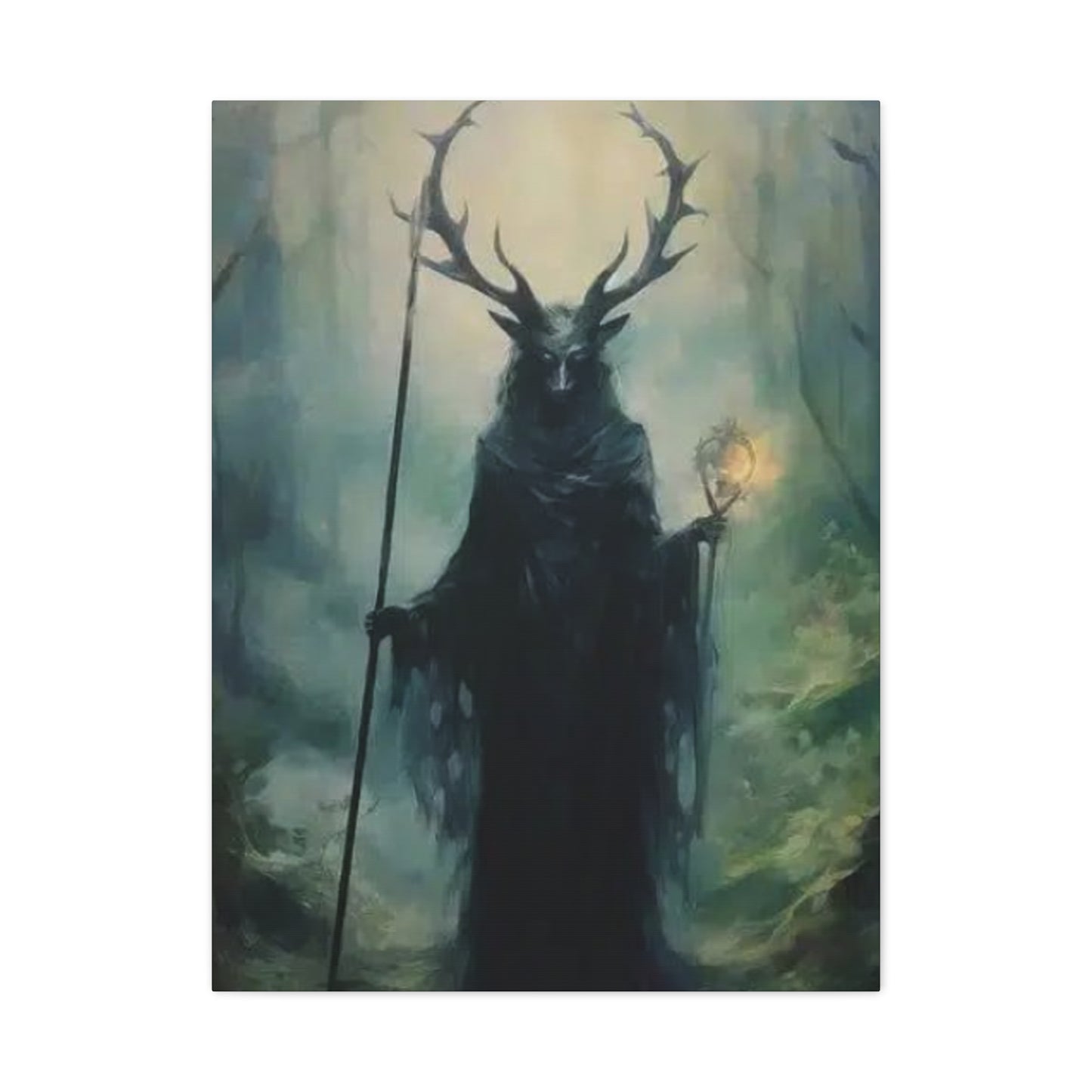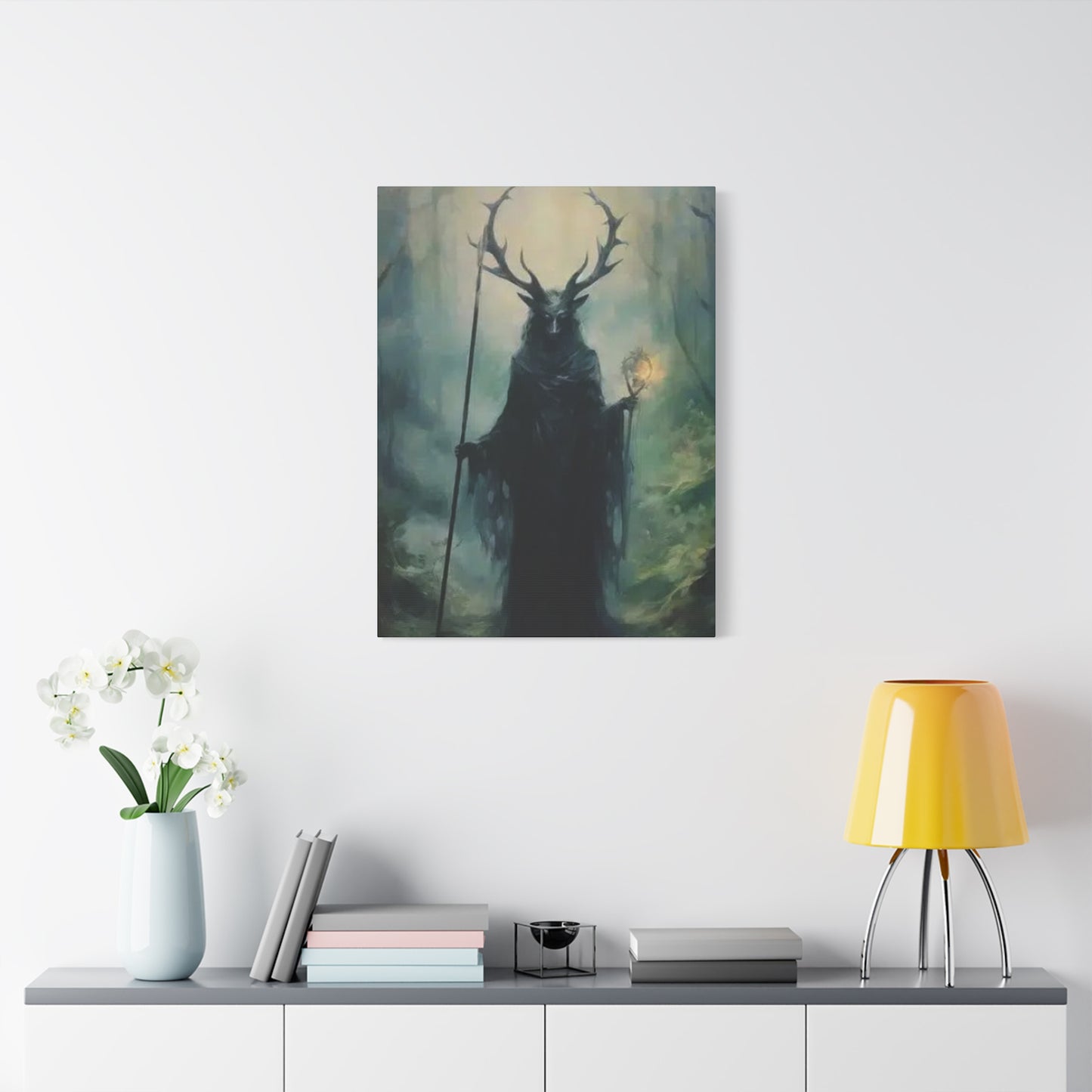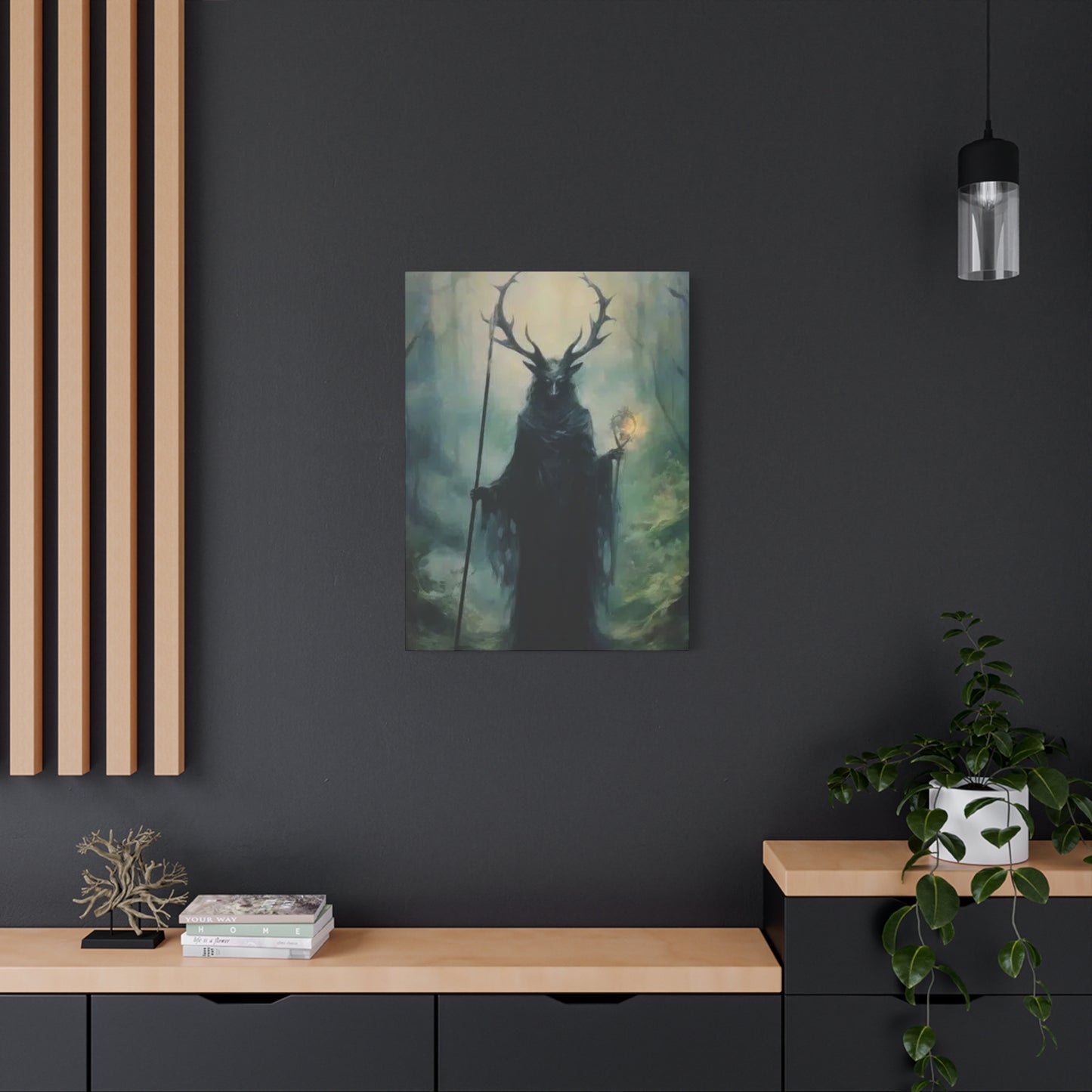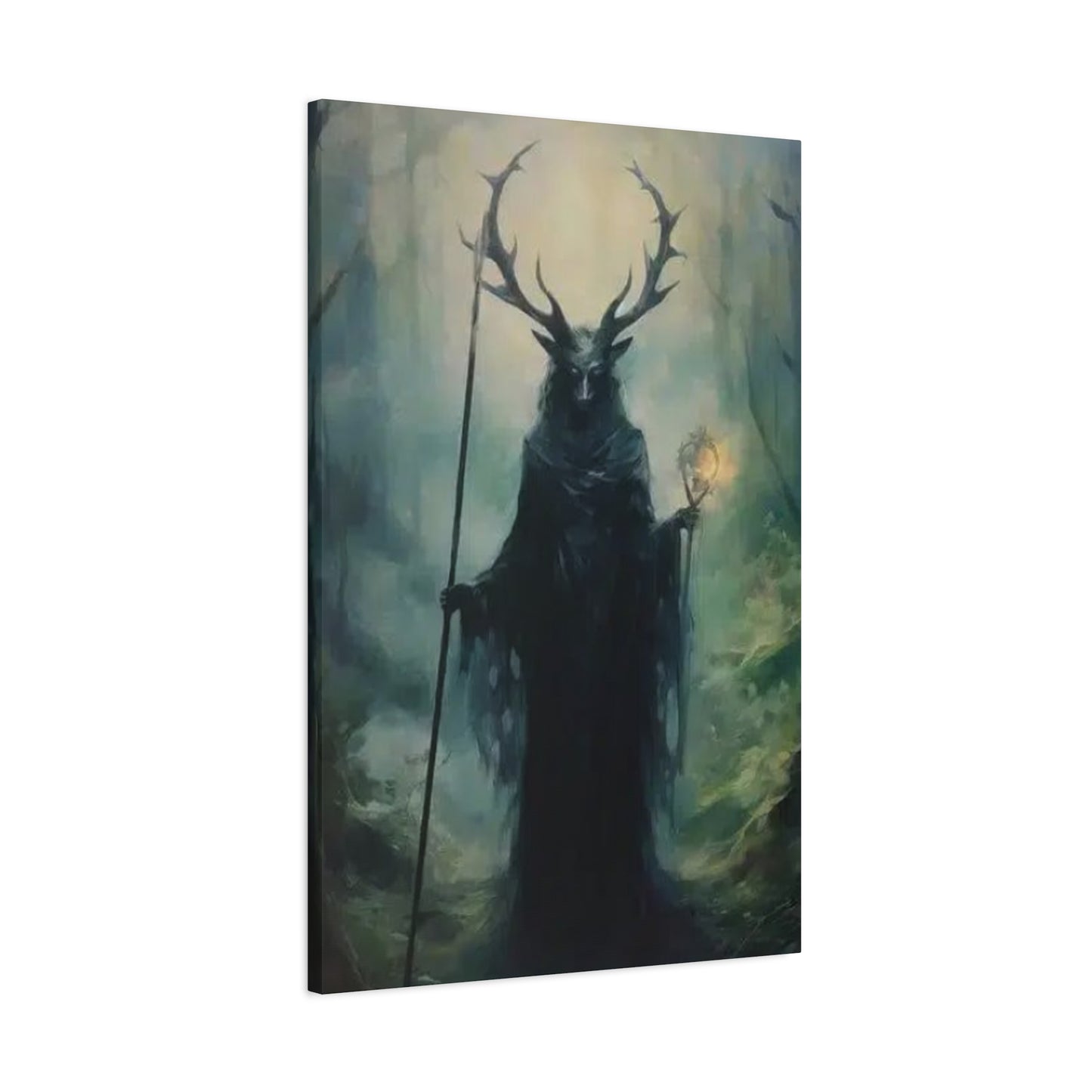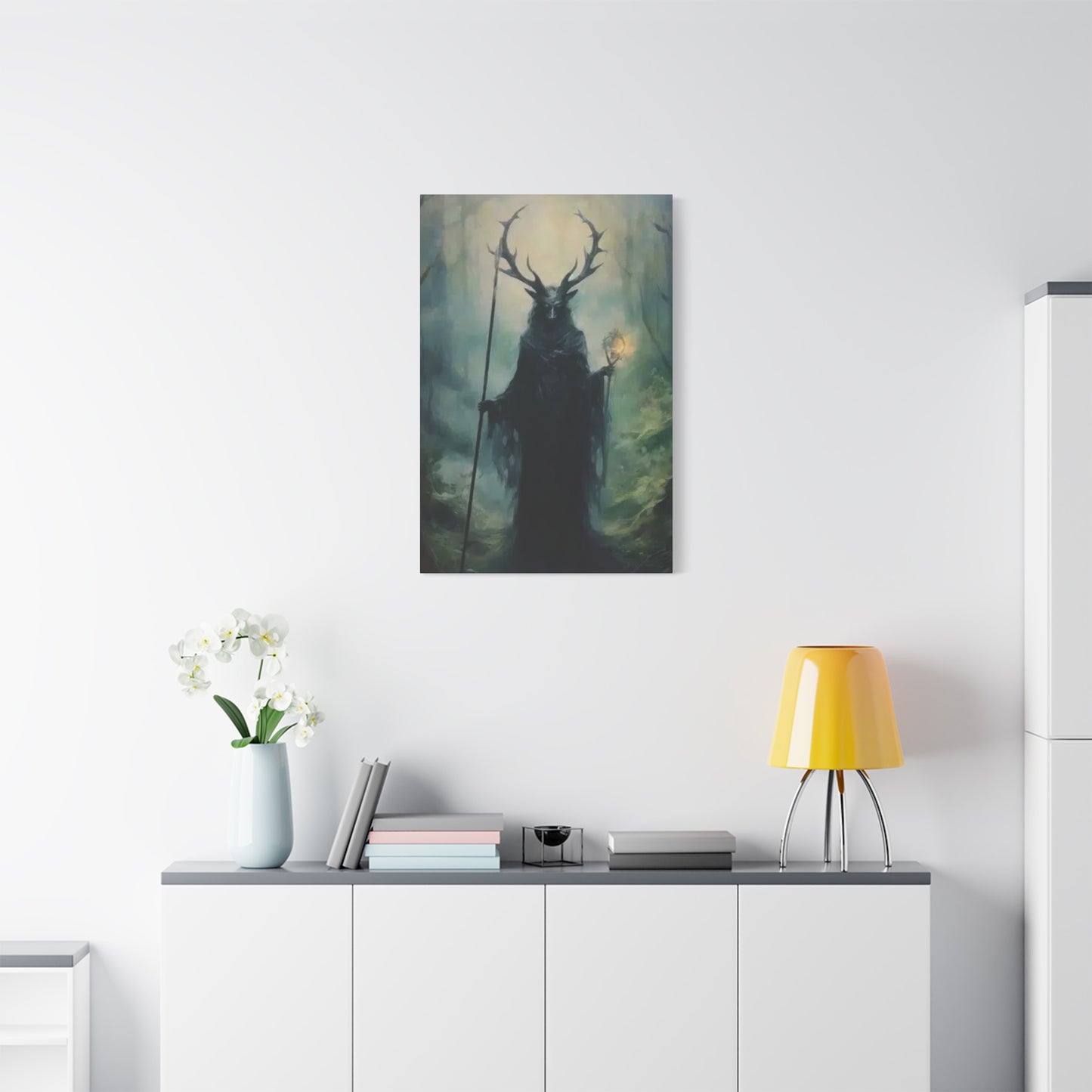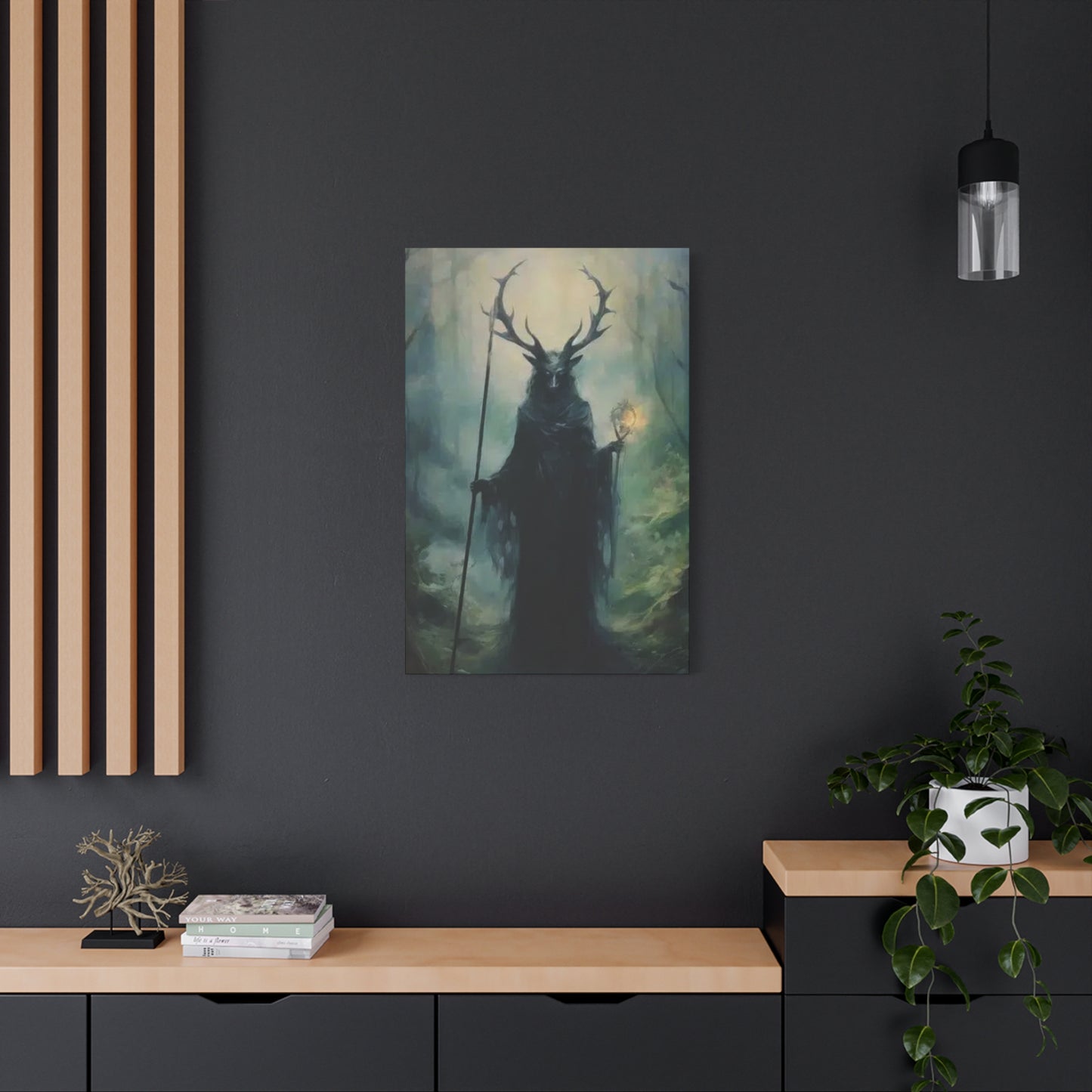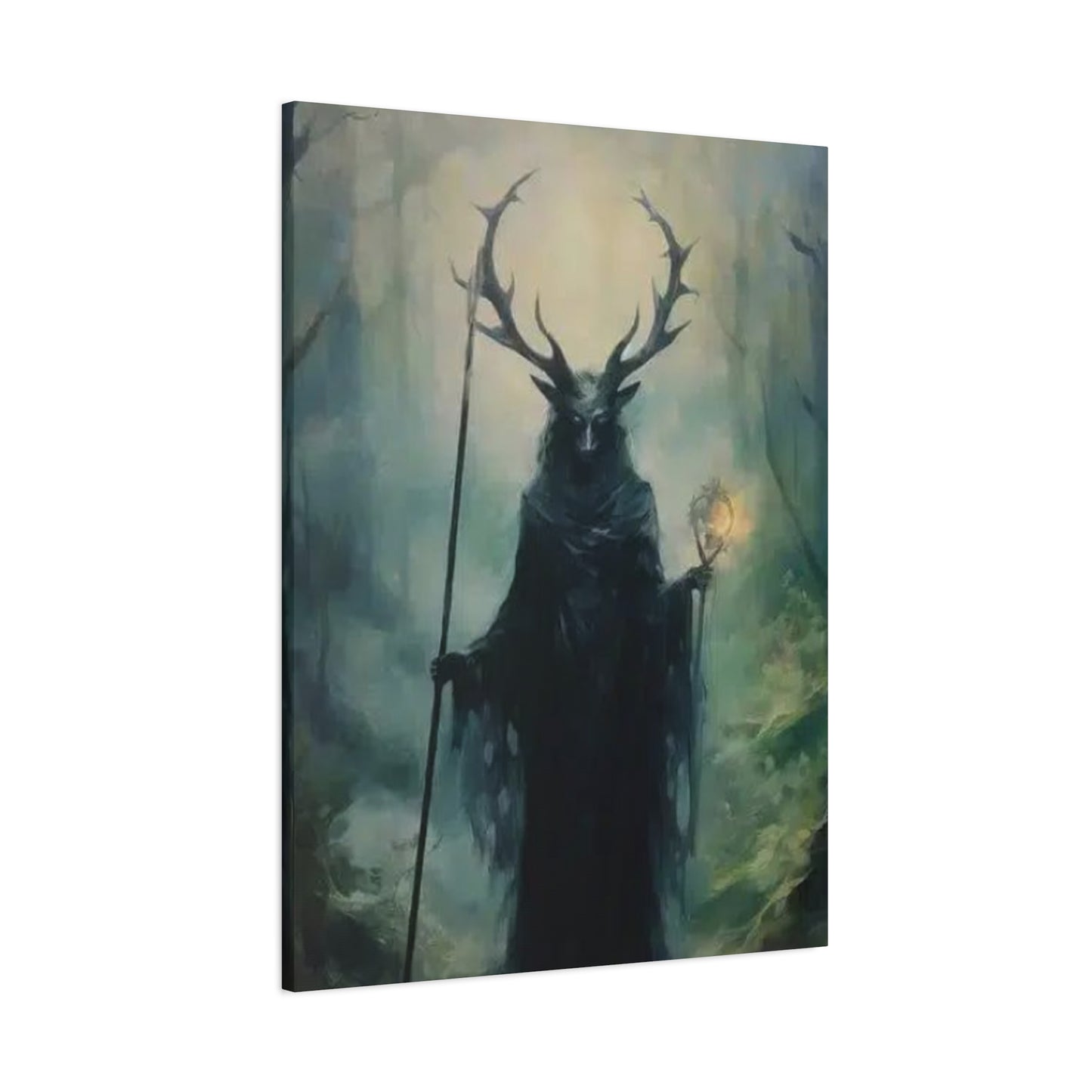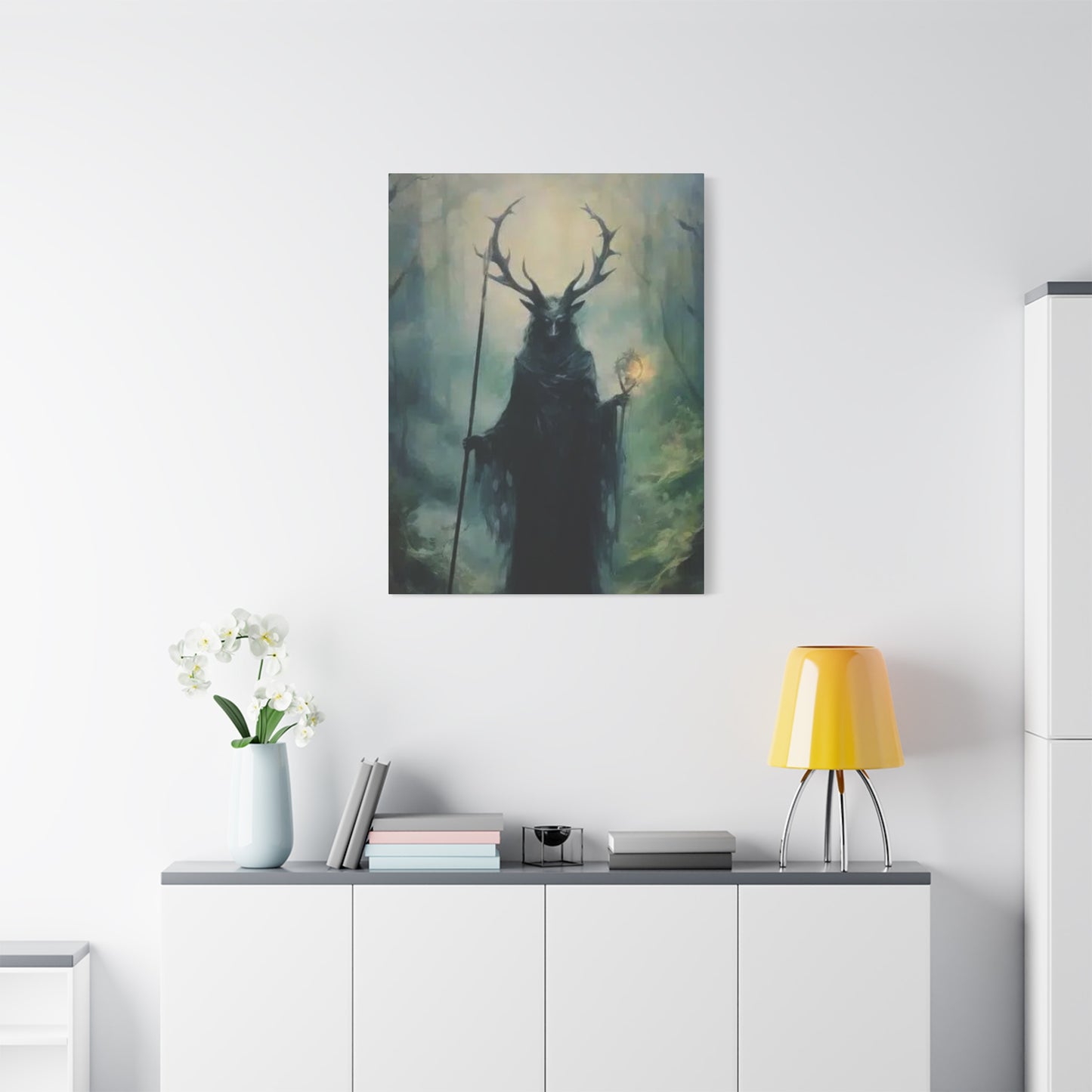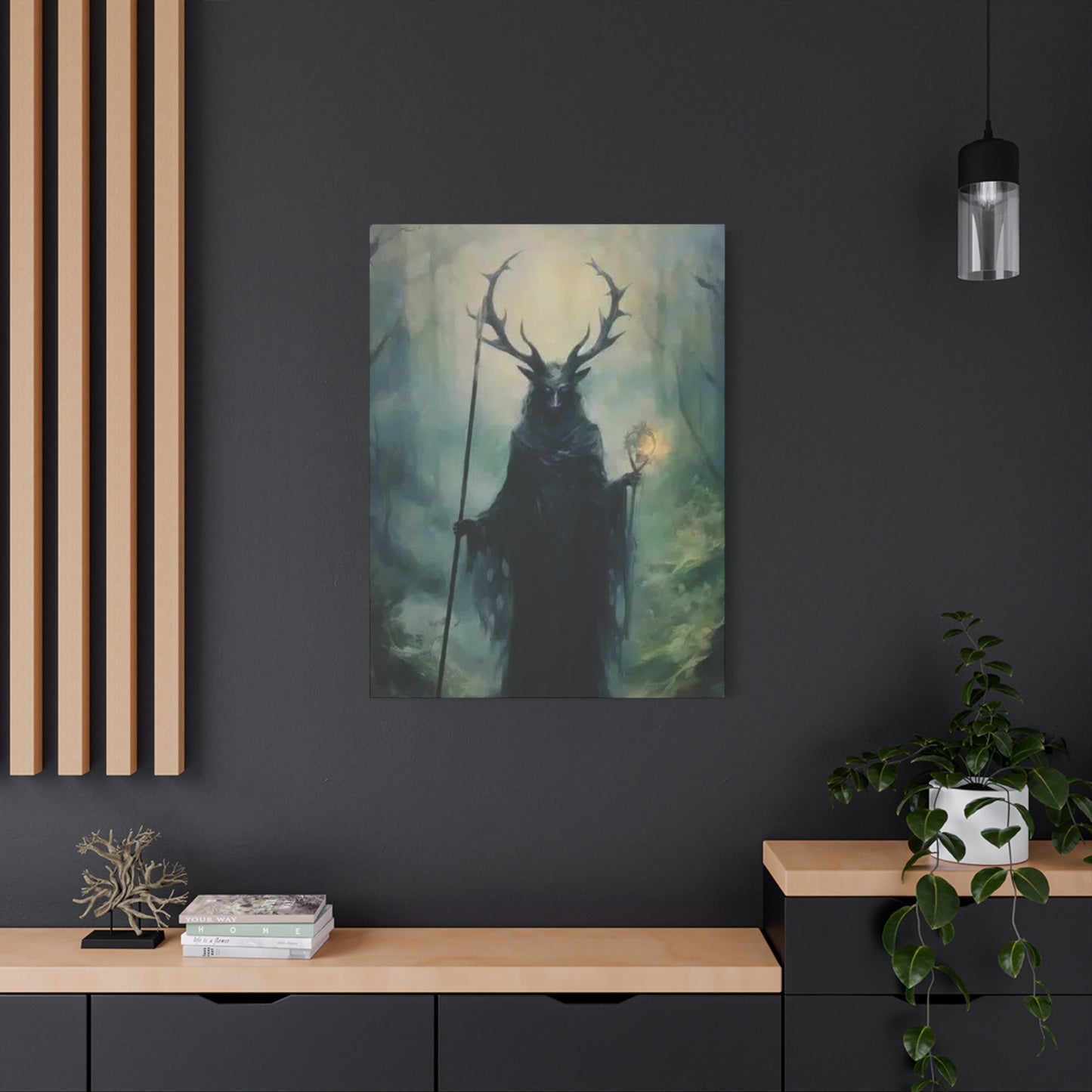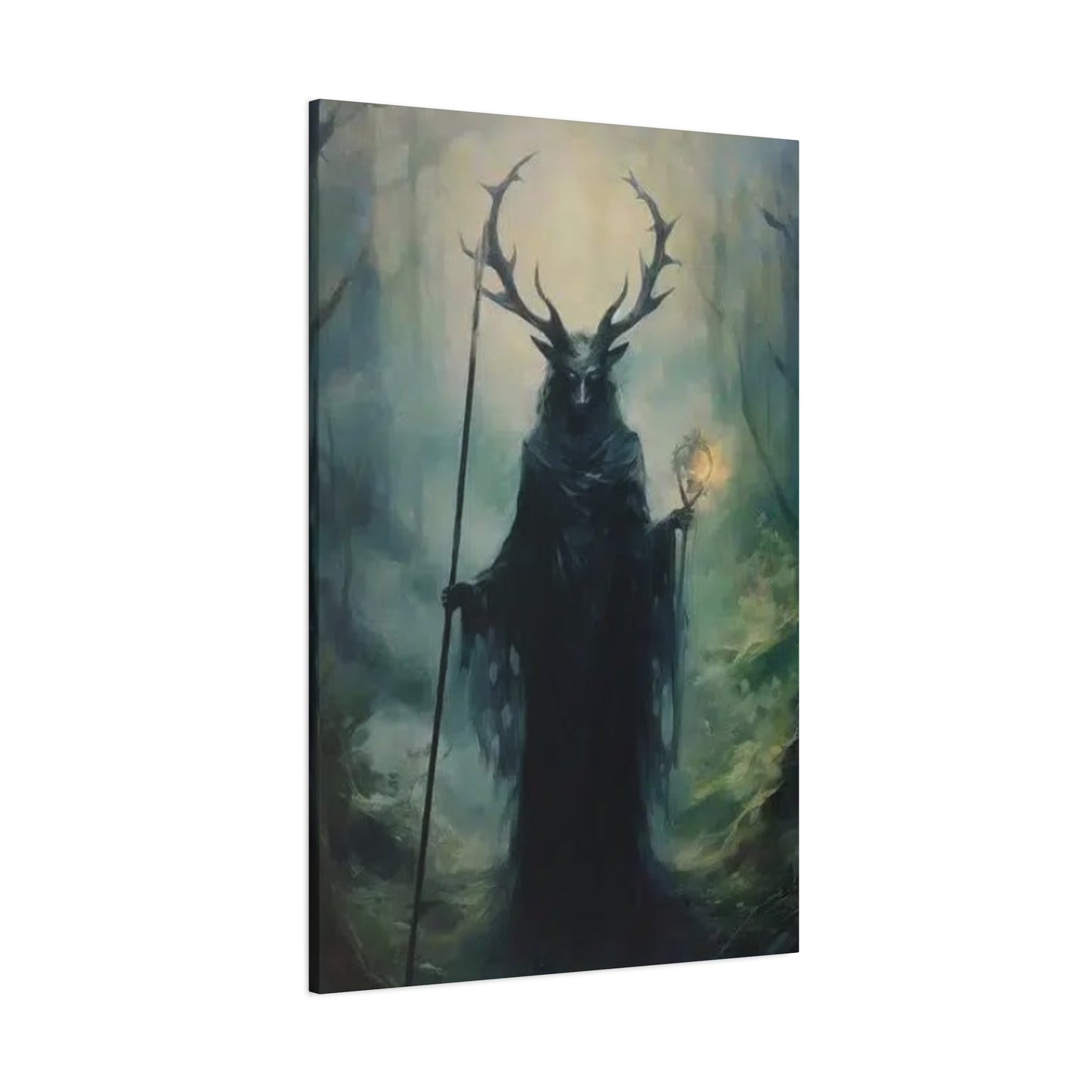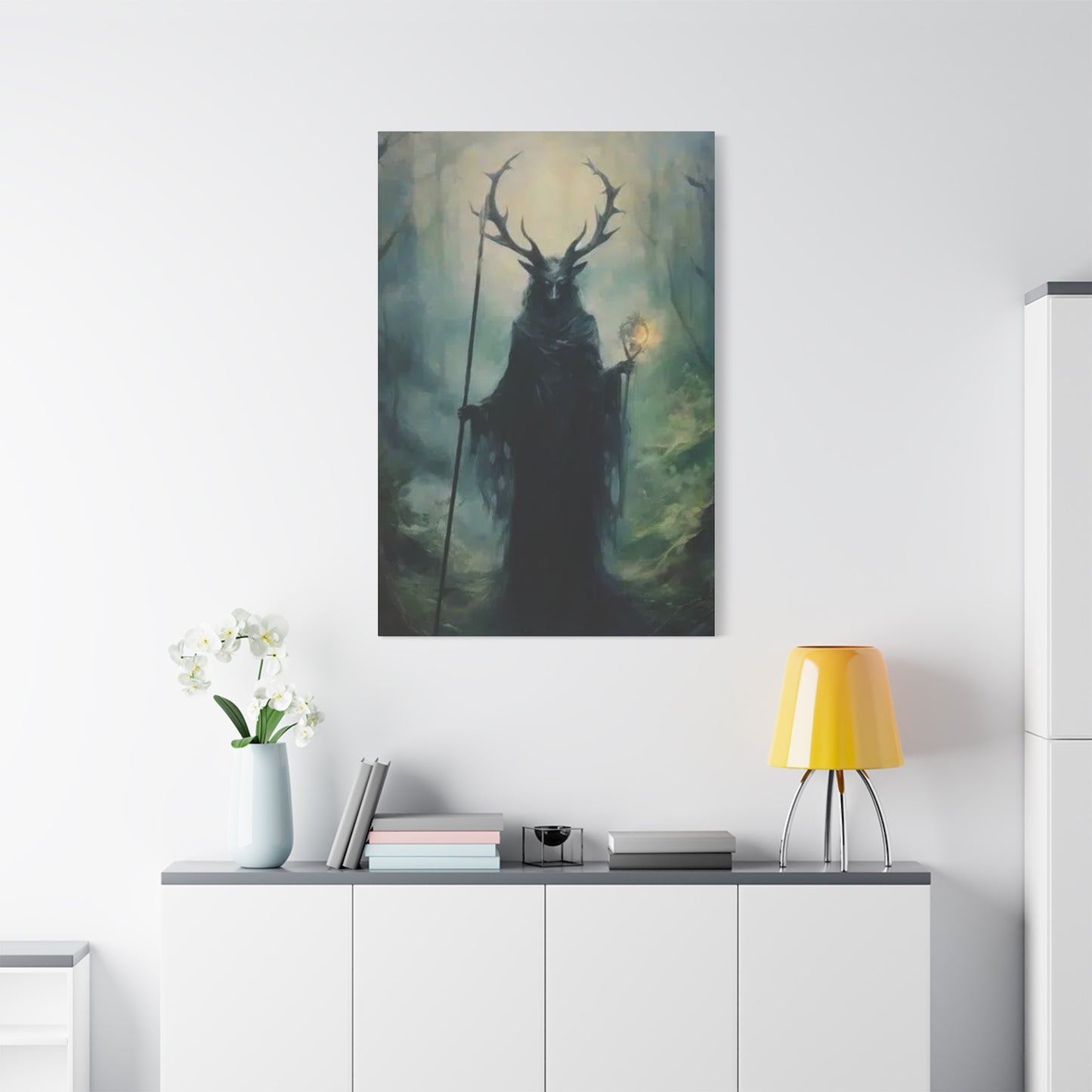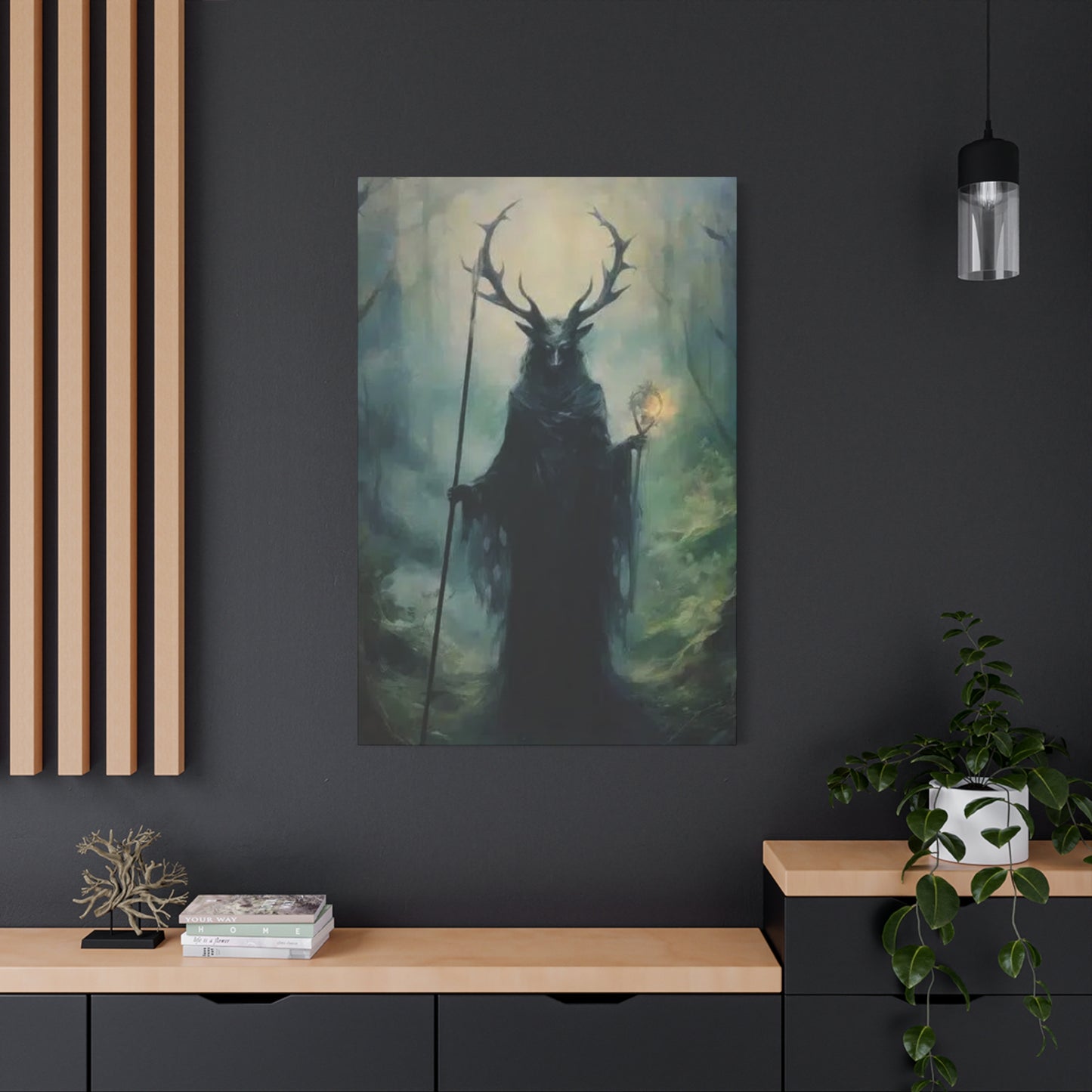Enchanting Deery Witch Wall Art: Magical Decor for Your Sacred Space
The realm of mystical artwork has captivated art enthusiasts and spiritual practitioners for centuries, offering a gateway to otherworldly experiences through visual expression. Among the most compelling artistic themes that have emerged in recent years is the enchanting world of desert witch wall art, which seamlessly blends the natural majesty of deer with the mysterious allure of witchcraft imagery. This fascinating artistic movement has gained tremendous popularity among those seeking to infuse their living environments with magical energy and profound symbolism.
Deery witch wall art represents a unique fusion of woodland mysticism and witchcraft iconography, creating powerful visual narratives that speak to our deepest connections with nature and the supernatural realm. These artistic pieces typically feature graceful deer adorned with mystical symbols, surrounded by elements such as crystals, moon phases, botanical illustrations, and arcane sigils that evoke the ancient traditions of witchcraft and paganism.
The growing fascination with this artistic genre reflects a broader cultural movement toward reconnecting with natural cycles, embracing feminine divine energy, and exploring alternative spiritual practices. Artists working within this medium draw inspiration from Celtic mythology, Wiccan traditions, and contemporary pagan beliefs to create artwork that serves both aesthetic and spiritual purposes in modern homes.
Contemporary practitioners of various spiritual paths find themselves drawn to deery witch wall art for its ability to create sacred atmospheres within domestic environments. These pieces serve as focal points for meditation, ritual work, and daily spiritual practice while simultaneously enhancing the overall aesthetic appeal of living areas. The imagery often incorporates elements that resonate with different seasons, lunar cycles, and natural phenomena, making each piece a dynamic addition to any collection.
The artistic techniques employed in creating deery witch wall art range from traditional watercolor and ink illustrations to digital compositions and mixed media approaches. Many artists combine realistic deer portraits with fantastical elements, creating dreamlike compositions that blur the boundaries between the natural and supernatural realms. Others embrace more abstract interpretations, using symbolic representations of deer energy combined with geometric patterns and mystical symbols.
Market demand for deery witch wall art has experienced significant growth as more individuals embrace alternative spiritual practices and seek meaningful artwork for their personal sanctuaries. This trend has spawned a diverse community of artists specializing in mystical themes, each bringing their unique perspective and artistic style to the genre. The accessibility of digital art platforms has democratized the creation and distribution of such artwork, allowing artists worldwide to share their mystical visions with a global audience.
The symbolism embedded within deery witch wall art extends far beyond mere aesthetic appeal, connecting viewers with ancient wisdom traditions and natural cycles that have guided human spiritual practice for millennia. Understanding these deeper meanings enhances appreciation for the artwork while providing insight into the rich cultural heritage that informs contemporary mystical art movements.
Mystical Vibes of Deery Witch Wall Art
The ethereal quality of deery witch wall art emanates from its ability to channel otherworldly energies through carefully crafted visual elements that speak directly to the soul. Artists working within this mystical realm understand the profound impact that symbolic imagery can have on consciousness, deliberately incorporating elements that evoke altered states of awareness and spiritual connection. The mystical vibes generated by these artworks stem from their unique ability to serve as portals between the mundane world and the realm of magic.
Central to the mystical atmosphere created by deery witch wall art is the masterful use of symbolism that draws from ancient wisdom traditions spanning multiple cultures and spiritual practices. The deer itself serves as a powerful totem animal representing gentleness, grace, intuition, and the ability to navigate between worlds. In many shamanic traditions, deer are considered messengers from the spirit realm, capable of guiding souls through difficult transitions and illuminating hidden paths toward enlightenment.
The integration of witchcraft symbols within these compositions amplifies the mystical resonance, creating layered meanings that reveal themselves gradually to viewers who spend time contemplating the artwork. Common elements include pentacles representing the five elements and protection, triple moon symbols honoring the goddess in her maiden-mother-crone aspects, and various botanical illustrations of herbs traditionally used in magical practice. These symbols work together to create an energetic matrix that supports spiritual work and meditation.
Color psychology plays a crucial role in establishing the mystical atmosphere of deery witch wall art. Artists frequently employ deep purples and indigos to evoke the mystery of twilight hours when the veil between worlds grows thin. Rich forest greens connect viewers with the natural world and the healing energy of growing things, while silvery moonlight tones enhance the connection to lunar cycles and feminine divine energy. Gold accents often highlight sacred symbols, drawing attention to their spiritual significance.
The composition techniques used in deery witch wall art deliberately guide the viewer's eye through a visual journey that mirrors the process of spiritual awakening. Many pieces feature spiraling patterns or circular mandala-like arrangements that encourage meditative contemplation. The placement of the deer within these compositions often suggests movement between different realms or states of consciousness, reinforcing the shamanic role of deer as spirit guides.
Mystical lighting effects frequently appear in deery witch wall art, with artists employing techniques that suggest supernatural illumination emanating from within the subjects themselves. This inner light quality reinforces the spiritual nature of the imagery while creating an sense of magic that transcends ordinary artistic representation. The interplay between light and shadow in these pieces often mirrors the dance between conscious and unconscious awareness that characterizes mystical experience.
The textural elements incorporated into deery witch wall art contribute significantly to their mystical appeal. Artists may suggest the rough bark of ancient trees, the soft texture of deer fur, the crystalline structure of gemstones, or the delicate veining of leaves through various artistic techniques. These textural details create a sense of tangible connection with the natural world that enhances the spiritual impact of the artwork.
Seasonal references within deery witch wall art connect viewers with the natural cycles that have always informed spiritual practice. Autumn imagery with falling leaves and harvest symbols might suggest times of release and gratitude, while spring compositions featuring budding plants and young deer evoke themes of renewal and new beginnings. These seasonal connections help viewers maintain awareness of their place within the larger cycles of nature.
The mystical vibes of deery witch wall art extend beyond visual elements to encompass the intentions and energy that artists pour into their creative process. Many artists working within this genre approach their craft as a form of spiritual practice, invoking protective energies and blessing their work with positive intentions. This conscious infusion of spiritual energy contributes to the powerful presence that viewers often sense when encountering these pieces.
Why Deery Witch Prints Are Unique
The distinctive nature of deery witch prints stems from their unprecedented fusion of natural wildlife imagery with esoteric spiritual symbolism, creating a genre that stands apart from both traditional wildlife art and conventional occult imagery. This unique combination addresses the growing desire among contemporary art collectors and spiritual practitioners to find pieces that honor both their connection to the natural world and their exploration of mystical traditions.
Unlike traditional wildlife art that focuses primarily on realistic representation of animals in their natural habitats, deery witch prints incorporate supernatural elements that transform the deer from mere forest creatures into mystical beings imbued with magical significance. This transformation occurs through the strategic placement of otherworldly elements such as floating crystals, ethereal mist, celestial bodies, and arcane symbols that suggest the deer's role as a bridge between the physical and spiritual realms.
The artistic techniques employed in creating deery witch prints often blend multiple media and styles to achieve effects that would be impossible through traditional single-medium approaches. Digital artists might combine photographic elements with hand-drawn illustrations, while traditional artists might incorporate mixed media techniques that layer watercolor, ink, and metallic accents to create depth and luminosity. This technical versatility allows artists to achieve visual effects that perfectly capture the otherworldly quality essential to the genre.
The color palettes chosen for deery witch prints distinguish them from other artistic genres through their emphasis on hues that evoke mystery, magic, and connection to natural cycles. While traditional wildlife art might emphasize realistic earth tones and natural lighting conditions, deery witch prints often feature supernatural color combinations that suggest twilight realms, aurora borealis phenomena, or the ethereal glow of moonlight filtering through enchanted forests.
Cultural authenticity plays a significant role in what makes deery witch prints unique, as artists working within this genre draw from genuine spiritual traditions rather than creating superficial decorative elements. Many artists research historical witchcraft practices, study various pagan traditions, and collaborate with contemporary practitioners to ensure their symbolic elements carry authentic meaning and respect for the spiritual systems they represent.
The narrative quality embedded within deery witch prints sets them apart from purely decorative artwork by telling visual stories that engage viewers in ongoing contemplation and discovery. Each element within the composition contributes to a larger narrative about transformation, spiritual journey, connection to nature, or the wielding of magical power. These stories unfold gradually as viewers spend time with the artwork, revealing new details and meanings with each encounter.
Deery witch prints often incorporate interactive elements that invite viewer participation in the artistic experience. Some pieces include hidden symbols or messages that reveal themselves only under certain lighting conditions or from specific viewing angles. Others feature layered symbolism that speaks differently to viewers depending on their level of knowledge about mystical traditions, creating artwork that grows with the viewer's spiritual development.
The therapeutic and transformative potential of deery witch prints distinguishes them from purely aesthetic artwork by offering genuine tools for personal growth and spiritual development. Many collectors report that living with these pieces supports their meditation practice, enhances their connection to natural cycles, and provides daily reminders of their spiritual intentions. This functional aspect elevates the artwork beyond mere decoration to become active participants in daily spiritual life.
Production methods for deery witch prints often incorporate sustainable and ethically conscious practices that align with the nature-honoring values expressed in the artwork itself. Artists frequently choose eco-friendly printing materials, support forest conservation efforts, or donate portions of their profits to wildlife protection organizations. This alignment between artistic content and production values adds another layer of authenticity to the genre.
The community aspect surrounding deery witch prints creates a unique culture of appreciation and shared meaning that extends far beyond individual ownership of artwork. Collectors often share their pieces on social media platforms dedicated to mystical art, participate in online discussions about symbolic meanings, and support artists through direct patronage and word-of-mouth promotion. This community engagement transforms individual artworks into focal points for broader cultural movements.
Customization options available for deery witch prints allow collectors to participate in the creative process by commissioning pieces that reflect their personal spiritual journey or incorporate symbols meaningful to their individual practice. This personalization aspect ensures that no two collections are identical while maintaining the essential characteristics that define the genre.
Choosing Deery Witch Canvas Sizes
The selection of appropriate canvas sizes for deery witch wall art requires careful consideration of multiple factors that influence both the visual impact of the artwork and its practical integration into living environments. The size of a canvas fundamentally affects how viewers interact with the piece, determining whether it serves as a subtle accent, a commanding focal point, or an immersive environment that surrounds the observer with mystical energy.
Large-format canvases, typically measuring 24 inches by 36 inches or larger, create powerful statement pieces that command attention and establish the mystical atmosphere of entire rooms. These substantial works allow artists to include intricate details that reward close examination while maintaining their impact from across the room. The expansive surface area provides ample opportunity for complex compositions featuring multiple deer figures, elaborate botanical elements, celestial phenomena, and intricate magical symbols that work together to create immersive mystical landscapes.
Medium-sized canvases, generally ranging from 16 inches by 20 inches to 20 inches by 24 inches, offer versatility that makes them popular choices for collectors building comprehensive mystical art collections. These proportions work well individually as accent pieces or as components of gallery wall arrangements that tell cohesive visual stories about spiritual themes. The moderate size allows for sufficient detail to engage viewers while remaining manageable for most residential display contexts.
Small-format canvases, typically 8 inches by 10 inches to 11 inches by 14 inches, serve important roles as intimate contemplative pieces that invite close, personal engagement with the mystical imagery. These compact works excel in personal altar arrangements, bedside displays, or meditation corners where viewers can engage with the artwork during quiet moments of spiritual practice. The smaller scale encourages detailed examination of symbolic elements and creates opportunities for discovering hidden meanings within the composition.
Proportional relationships between canvas width and height significantly influence the narrative flow and emotional impact of deery witch wall art. Horizontal orientations, often called landscape format, naturally accommodate scenes that suggest movement across mystical landscapes or the passage of time through seasonal cycles. These proportions work particularly well for compositions featuring herds of mystical deer or panoramic views of enchanted forests.
Vertical orientations, sometimes referred to as portrait format, create natural frameworks for compositions that emphasize upward movement toward spiritual realms or the connection between earthly and celestial elements. These proportions excel for pieces featuring individual deer figures surrounded by ascending elements such as rising mist, floating symbols, or towering trees that draw the eye upward toward transcendent meanings.
Square canvas formats offer unique compositional opportunities that work particularly well for mandala-inspired deery witch designs or circular arrangements of symbolic elements around central deer figures. The balanced proportions of square formats create natural focal points while providing equal emphasis to all directional movements within the composition. These formats work especially well for meditation-focused pieces intended to support contemplative practices.
Panoramic formats, featuring extreme horizontal proportions, create opportunities for epic narrative compositions that unfold across expansive mystical landscapes. These formats work particularly well for pieces depicting seasonal transitions, lunar cycles, or the journey of mystical deer through various magical realms. The extended horizontal format naturally guides the viewer's eye through sequential narrative elements.
The relationship between canvas size and viewing distance becomes particularly important when selecting deery witch wall art for specific locations within the home. Pieces intended for close examination during meditation or ritual work benefit from smaller formats that reveal their details when viewed from arm's length. Conversely, artwork intended to create ambient mystical atmosphere in larger rooms requires sufficient size to maintain visual presence from typical seating distances.
Wall dimensions and architectural features of the intended display location fundamentally influence appropriate canvas size selection. High ceilings can accommodate large vertical formats that emphasize the upward reach toward spiritual realms, while long horizontal wall areas provide ideal settings for panoramic mystical landscapes. Corner locations might benefit from smaller pieces that create intimate mystical sanctuaries without overwhelming limited wall dimensions.
Grouping strategies for multiple deery witch pieces require careful consideration of individual canvas sizes to create harmonious arrangements that enhance rather than compete with each other. Gallery wall approaches might combine various sizes to create dynamic visual rhythms, while series installations benefit from consistent sizing that allows each piece to contribute equally to the overall mystical narrative.
Budget considerations often influence canvas size decisions, as larger formats typically require higher investment in both original artwork and framing costs. However, the long-term satisfaction and impact of appropriately sized artwork often justify the additional expense, particularly for pieces intended to serve as focal points for spiritual practice or room design.
Framing Ideas for Deery Witch Art
The framing of deery witch wall art presents unique opportunities to enhance the mystical qualities of the artwork while providing practical protection and professional presentation. The selection of appropriate framing materials, styles, and techniques can either amplify the supernatural atmosphere of the piece or detract from its spiritual impact, making thoughtful framing decisions essential for maximizing the artwork's effectiveness.
Natural wood frames offer organic connections that complement the woodland themes inherent in deery witch art while providing warmth and earthiness that enhances the spiritual grounding of the pieces. Reclaimed barn wood, driftwood, or sustainably harvested hardwoods create rustic frameworks that honor the natural elements within the artwork. The grain patterns and natural variations in wood tones add textural interest that enriches the overall presentation without competing with the mystical imagery.
Dark-stained wood frames in deep walnut, ebony, or mahogany tones create sophisticated presentations that allow the mystical colors within deery witch art to appear more vibrant through contrast. These darker frames work particularly well with pieces featuring bright magical elements or ethereal lighting effects, as the dark surround makes the luminous qualities appear to glow more intensely. The rich darkness of these frames also echoes the mysterious nighttime settings frequently depicted in deery witch compositions.
Metallic frames in antique bronze, copper, or pewter finishes complement the mystical themes by suggesting ancient artifacts or magical implements. These finishes naturally develop patina over time, adding to their authentic aged appearance that connects with historical witchcraft traditions. The subtle shimmer of metallic frames can echo the magical luminosity within the artwork while providing durability and longevity.
Ornate frames featuring carved details, gothic elements, or Celtic knotwork patterns can enhance the mystical presentation when selected thoughtfully to complement rather than overshadow the artwork. These decorative elements work best when they echo symbolic themes present within the piece itself, creating cohesive presentations that feel intentionally curated rather than accidentally matched.
Floating frame techniques create contemporary presentations that allow deery witch art to appear suspended within the frame opening, creating visual separation between the artwork and its surround. This approach works particularly well for pieces featuring ethereal or supernatural elements, as the floating effect reinforces the otherworldly quality of the imagery. Canvas floater frames in dark metals or natural woods maintain focus on the artwork while providing clean, modern presentation.
Multiple matting layers create depth and visual richness that can enhance the mystical qualities of deery witch prints while providing additional protection for the artwork. Combinations of textured mats in complementary colors can echo the natural elements within the piece while creating sophisticated presentations suitable for formal display contexts. Beveled mat edges catch light in ways that add subtle dimensional effects to the overall presentation.
Shadow box framing techniques allow for the incorporation of three-dimensional elements that extend the mystical themes beyond the flat picture plane. Small crystals, dried herbs, feathers, or other meaningful objects can be arranged within the shadow box to create shrine-like presentations that honor the spiritual themes of the artwork. These dimensional additions transform the framed piece into an interactive altar element.
Conservation framing methods ensure long-term preservation of deery witch art through the use of archival materials, UV-protective glazing, and proper mounting techniques. Museum-quality framing approaches prevent deterioration while maintaining the spiritual significance of the pieces for future generations. Acid-free mats, archival mounting boards, and conservation glazing protect against fading, moisture damage, and environmental pollutants.
Seasonal frame swapping creates dynamic presentations that allow single pieces of deery witch art to evolve with natural cycles and personal spiritual development. This approach involves creating multiple frame options for favorite pieces, allowing collectors to refresh their presentations according to seasonal themes, ritual calendar observances, or changing aesthetic preferences within their mystical decor.
DIY framing approaches using natural materials collected from meaningful locations can create deeply personal presentations that connect the framed artwork with specific natural environments or spiritual experiences. Branches, stones, shells, or other natural elements can be incorporated into handcrafted frames that tell personal stories while honoring the natural themes within the artwork.
Lighting integration within custom framing solutions can dramatically enhance the mystical presentation of deery witch art through subtle illumination effects. LED strip lighting hidden within the frame structure can create gentle backlighting that makes the artwork appear to glow with inner light, reinforcing the supernatural qualities of the imagery. Battery-operated systems allow for portable mystical lighting effects.
Gallery-style hanging systems provide flexibility for rotating and rearranging framed deery witch collections while maintaining professional presentation standards. Track systems, picture ledges, or gallery walls allow for dynamic displays that can evolve with growing collections or changing spiritual focus areas within the home.
Symbolism in Deery Witch Wall Art
The rich symbolic vocabulary embedded within deery witch wall art draws from diverse spiritual traditions, creating layered meanings that speak to practitioners of various mystical paths while honoring the ancient wisdom that connects humanity with natural cycles and supernatural forces. Understanding these symbolic elements enhances appreciation for the artwork while providing insight into the deeper spiritual concepts that inform contemporary mystical practice.
The deer itself carries profound symbolic significance across numerous cultures and spiritual traditions, representing qualities essential to mystical practice and personal transformation. In Celtic mythology, deer serve as messengers from the otherworld, capable of leading heroes and heroines on spiritual quests that result in profound wisdom and personal growth. The antlers of male deer symbolize the tree of life, with their branching patterns representing the connection between earthly roots and celestial aspirations.
Feminine deer energy embodies gentleness, intuition, grace, and sensitivity to subtle energies that characterize successful mystical practice. The doe represents the nurturing aspect of the goddess, offering protection and guidance to those navigating spiritual transformation. Her ability to move silently through forest environments symbolizes the skill of moving between worlds without disturbing the delicate balance between physical and spiritual realms.
Moon phases frequently appear in deery witch art as symbols of cyclical transformation, feminine divine energy, and the passage of time through natural rhythms. The new moon represents new beginnings and intention setting, while the waxing moon symbolizes growth and manifestation. Full moons embody peak magical power and completion, while waning moons represent release and clearing away obstacles to spiritual development.
Botanical elements within deery witch compositions carry specific magical associations derived from traditional herbalism and folk magic practices. Oak leaves represent strength, endurance, and connection to ancient wisdom, while rowan branches provide protection against negative influences. Ivy symbolizes faithfulness and eternal life, while ferns represent humility and the ability to find beauty in shadowed places.
Crystalline formations depicted in deery witch art reference the mineral kingdom's role in energy work and magical practice. Amethyst suggestions provide spiritual protection and enhanced intuition, while rose quartz elements represent healing and unconditional love. Clear quartz symbolizes amplification of intention and purification of energy, while moonstone connections enhance psychic abilities and connection to lunar cycles.
Elemental symbols integrate the classical elements of earth, air, fire, and water into cohesive magical systems that provide balance and completeness to mystical practice. Earth elements might appear as stones, mountains, or growing plants representing stability and grounding. Air symbols including feathers, clouds, or wind patterns suggest communication and inspiration. Fire elements such as candles, lightning, or solar imagery represent transformation and passion, while water symbols including streams, rain, or mist suggest emotional healing and purification.
Sacred geometry patterns frequently appear as underlying structural elements that provide mystical significance to deery witch compositions. Pentacles representing the five elements and human spiritual development might appear as subtle background patterns or prominent focal elements. Spirals suggest the cyclical nature of spiritual growth and connection to cosmic forces, while mandala-like circular arrangements create sacred environments for contemplation and meditation.
Seasonal symbolism connects deery witch art with the natural cycles that have always informed spiritual practice and magical timing. Spring imagery featuring young deer and budding plants represents renewal and new magical endeavors. Summer compositions with full-grown deer in lush environments symbolize abundance and peak manifestation power. Autumn scenes with mature deer and harvest imagery suggest gratitude and preparation for introspective periods, while winter representations featuring deer in snow-covered landscapes embody rest, reflection, and inner spiritual work.
Celestial elements including stars, constellations, planets, and cosmic phenomena connect earthly mystical practice with universal forces and cosmic consciousness. The North Star might appear as a symbol of guidance and constancy, while constellation patterns suggest connection to astrological influences and timing. Planets such as Venus might represent love magic, while Mars imagery suggests protection and courage in spiritual work.
Color symbolism plays crucial roles in conveying mystical meanings through carefully chosen palettes that evoke specific energetic qualities and spiritual associations. Purple and violet tones suggest connection to higher spiritual realms and enhanced psychic abilities. Deep blues represent wisdom and communication with divine forces, while greens symbolize healing, growth, and connection to natural magic. Silver and white colors embody lunar energy and purification, while gold represents solar power and divine illumination.
Numerical symbolism appears through the repetition of specific numbers of elements or the arrangement of compositional features according to numerological principles. The number three might appear through triple goddess symbols or three-part compositional arrangements representing maiden-mother-crone aspects. Five-fold patterns reference the pentacle and human spiritual development, while seven-element arrangements suggest completion and magical perfection.
Mixing Deery Witch Art with Fantasy Themes
The integration of deery witch wall art with broader fantasy themes creates enchanting environments that transport viewers into imaginary realms where magic permeates every aspect of existence. This combination allows collectors to develop comprehensive mystical environments that tell cohesive visual stories while maintaining the spiritual significance of individual pieces within larger narrative contexts.
Dragon imagery pairs exceptionally well with deery witch art by representing complementary aspects of magical power and wisdom. While deer embody gentle, intuitive approaches to mystical practice, dragons suggest the fierce protective energies and transformative fire that accompanies advanced spiritual work. Compositions featuring both elements might depict dragons as guardians of mystical deer herds or as collaborative forces working together to maintain magical balance within enchanted realms.
Fairy folk elements enhance deery witch themes by introducing playful magical energies that celebrate the joy and wonder inherent in mystical practice. Woodland fairy imagery featuring tiny figures riding deer, decorating antlers with flowers, or dancing around deer gatherings creates whimsical scenes that maintain spiritual significance while emphasizing the celebration and community aspects of magical work.
Unicorn symbolism naturally complements deery witch art through shared themes of purity, healing, and connection to natural magic. Both deer and unicorns represent gentle approaches to mystical work, with unicorns adding elements of healing magic and transformative power. Gallery arrangements might alternate deery witch pieces with unicorn art to create environments that celebrate various aspects of nature-based magical practice.
Medieval fantasy elements including castles, knights, wizards, and magical artifacts provide historical context that connects contemporary deery witch art with traditional fantasy narratives. These combinations suggest that mystical deer inhabit the same magical realms as legendary heroes and powerful sorcerers, creating continuity between classical fantasy literature and modern mystical art movements.
Phoenix symbolism adds themes of death, rebirth, and transformation that complement the seasonal cycles and personal growth themes inherent in deery witch art. The phoenix's cycle of burning and renewal mirrors the transformative processes depicted in mystical deer imagery, while its connection to fire elements balances the earth and water energies typically emphasized in woodland-themed mystical art.
Mythological creatures from various cultural traditions expand the fantasy context while honoring diverse spiritual systems that inform contemporary mystical practice. Celtic kelpies, Norse wolves, Greek pegasi, or Japanese kitsune might appear alongside mystical deer in comprehensive fantasy collections that celebrate the worldwide heritage of magical beliefs and supernatural creatures.
Landscape fantasy elements including enchanted forests, mystical mountains, magical streams, and otherworldly skies provide environmental contexts that support both deery witch imagery and broader fantasy themes. These background elements create cohesive visual environments where various magical creatures and mystical phenomena can coexist naturally within believable fantasy realms.
Seasonal fantasy themes allow deery witch art to integrate with holiday decorations and seasonal celebrations that honor both natural cycles and fantasy traditions. Halloween displays might feature deery witch art alongside gothic fantasy elements, while spring arrangements could combine mystical deer imagery with fairy garden themes and magical flower imagery.
Quest narrative elements transform static art collections into dynamic visual stories that suggest ongoing adventures and mystical journeys. Deery witch art might serve as waypoints along fantasy quest routes marked by maps, treasure images, magical artifact depictions, and adventure scene illustrations that create comprehensive fantasy narrative environments.
Magical tool imagery including wands, staffs, cauldrons, spell books, and crystal balls complement deery witch themes by suggesting the practical aspects of magical work while maintaining the mystical atmosphere. These elements transform art collections into visual libraries of magical knowledge that support actual mystical practice while maintaining fantasy appeal.
Portal and gateway themes create connections between different fantasy realms while positioning deery witch art as guardians or guides for mystical transitions. Stone circles, magical doorways, rainbow bridges, or dimensional rifts might appear as compositional elements that suggest the deer's role in facilitating movement between ordinary and magical realities.
Elemental creature themes expand the magical bestiary while maintaining thematic coherence with nature-based deery witch imagery. Earth elementals, water spirits, fire salamanders, and air sylphs might appear as companions or allies to mystical deer, creating comprehensive representations of elemental magic within fantasy environments.
Popular Artists of Deery Witch Prints
The contemporary deery witch art movement encompasses a diverse community of talented artists who bring unique perspectives and artistic techniques to this emerging genre. These creators range from traditionally trained fine artists who have embraced mystical themes to self-taught visionaries who developed their skills specifically to express spiritual concepts through deer imagery combined with witchcraft symbolism.
Digital art platforms have democratized the creation and distribution of deery witch prints, allowing artists worldwide to share their mystical visions with global audiences while building supportive communities around shared spiritual and aesthetic values. Many prominent artists in this field began by sharing their work on social media platforms, gradually building followings that appreciate both their artistic skill and their authentic connection to mystical traditions.
Traditional media artists working in watercolor, oil, acrylic, and mixed media approaches bring classical artistic training to deery witch themes, creating pieces that demonstrate sophisticated technical skill while maintaining spiritual authenticity. These artists often combine realistic deer portraiture with fantastical elements, achieving seamless integration between natural observation and supernatural imagination.
The therapeutic art movement has contributed significantly to the deery witch genre, with artists who use mystical imagery as tools for personal healing and transformation sharing their work with others seeking similar spiritual benefits. These artists often emphasize the emotional and psychological impacts of their imagery, creating pieces specifically designed to support meditation, ritual work, and personal growth.
Collaborative artistic projects have emerged within the deery witch community, with artists working together on series pieces, shared exhibitions, and community altar installations that celebrate collective creativity while maintaining individual artistic vision. These collaborations demonstrate the community-oriented values that characterize much of contemporary mystical practice.
Academic artists with formal training in art history, comparative religion, and anthropological studies bring scholarly perspective to deery witch art by ensuring cultural accuracy and historical authenticity in their symbolic usage. These artists often research traditional witchcraft practices, study historical magical texts, and collaborate with contemporary practitioners to create work that honors genuine spiritual traditions.
Indigenous artists contribute authentic perspectives on deer symbolism and nature-based spiritual practices, bringing traditional knowledge to contemporary mystical art movements while maintaining respect for their cultural heritage. These artists often emphasize the sacred relationships between humans and animal spirits that have informed indigenous spiritual practices for countless generations.
Self-taught visionary artists bring raw authentic energy to deery witch art through intuitive approaches that prioritize spiritual inspiration over technical convention. These artists often report receiving their imagery through dreams, meditation, or direct spiritual experience, creating work that serves as visual documentation of mystical encounters and supernatural phenomena.
Artist collectives focused on feminist spirituality have embraced deery witch themes as expressions of goddess-centered religious practices and women's empowerment through connection with natural cycles. These groups often organize exhibitions, workshops, and ritual events that combine artistic appreciation with spiritual practice and community building.
Sustainable art practices characterize many deery witch artists who align their production methods with the nature-honoring values expressed in their artwork. These artists often use eco-friendly materials, support forest conservation efforts, and donate portions of their profits to wildlife protection organizations, creating authentic alignment between artistic content and personal values.
Commission artists specializing in personalized deery witch pieces allow collectors to participate in the creative process by incorporating personal spiritual symbols, meaningful locations, or individual totemic animals into custom compositions. This personalization ensures that each piece reflects the collector's unique spiritual journey while maintaining the essential characteristics that define the genre.
The global nature of the deery witch art community creates opportunities for cultural exchange and mutual inspiration as artists from different countries share their unique perspectives on mystical themes. European artists might emphasize Celtic traditions, while American artists draw from Native American symbolism, and artists from other regions contribute their own cultural perspectives on deer symbolism and nature-based spirituality.
Print-on-demand platforms have enabled artists to offer high-quality reproductions of their original deery witch artwork at affordable prices, making mystical art accessible to broader audiences while providing sustainable income streams for artists. These platforms often feature community features that allow collectors to connect directly with artists and commission custom work.
Abstract Styles in Deery Witch Art
The exploration of abstract artistic approaches within deery witch art creates opportunities for non-literal interpretations of mystical themes that transcend realistic representation to convey spiritual concepts through pure form, color, and composition. Abstract deery witch art often proves more emotionally evocative than realistic depictions, allowing viewers to project their own spiritual experiences and mystical understanding onto the artwork.
Geometric abstraction in deery witch art employs mathematical patterns, crystalline structures, and sacred geometry principles to suggest the underlying spiritual architecture that connects deer symbolism with mystical concepts. These approaches might reduce deer forms to essential triangular or diamond shapes while incorporating pentacles, spirals, and other sacred geometric elements that create mystical meaning through pure mathematical relationships.
Color field abstraction focuses on the emotional and spiritual impacts of color relationships rather than recognizable imagery, using palettes associated with mystical experiences to evoke the essence of deery witch themes without literal representation. Deep purples might blend into forest greens, suggesting twilight woodland environments, while metallic accents hint at magical energies without depicting specific mystical symbols.
Expressionistic approaches to deery witch art emphasize emotional content over realistic representation, using bold brushstrokes, dramatic color contrasts, and gestural mark-making to convey the passionate spiritual experiences associated with mystical practice. These pieces often capture the energy and movement of spiritual transformation rather than static mystical imagery.
Surrealistic elements within abstract deery witch art create dreamlike compositions that suggest the altered states of consciousness associated with mystical experience. Flowing forms might suggest deer shapes dissolving into mystical mist, while impossible spatial relationships hint at the otherworldly nature of spiritual realms where normal physical laws don't apply.
Minimalist approaches reduce deery witch themes to essential elements, using simple forms and restricted color palettes to create powerful statements about spiritual concepts. A single curved line might suggest deer antlers, while a circle of purple paint evokes mystical energy, creating maximum impact through minimal visual means.
Textural abstraction emphasizes physical surface qualities that invite tactile engagement while suggesting natural elements found in mystical woodland environments. Heavy impasto techniques might suggest tree bark or rough stone, while smooth glazed areas evoke still water or polished crystals, creating sensory experiences that complement spiritual contemplation.
Collage techniques within abstract deery witch art combine various materials and textures to create layered compositions that reveal different meanings depending on viewing distance and lighting conditions. Natural materials such as leaves, bark, or feathers might be incorporated alongside painted elements, creating pieces that literally contain elements of the natural world they celebrate.
Digital abstraction allows for experimental techniques that would be impossible with traditional media, including layered transparencies, infinite color gradients, and complex pattern generations that suggest the mathematical perfection underlying natural mystical phenomena. These digital techniques can create otherworldly effects that perfectly capture the supernatural aspects of deery witch themes.
Fluid art techniques using acrylic pouring or alcohol ink methods create organic flowing patterns that suggest natural processes such as water flow, wind movement, or the growth patterns of plants and antlers. These techniques often produce unexpected results that artists and viewers can interpret as mystical messages or spiritual guidance.
Symbol integration within abstract compositions maintains connection to traditional deery witch symbolism while avoiding literal representation. Pentacles might appear as subtle five-pointed arrangements of color spots, while triple moon symbols emerge through three circular forms in different phases of definition. These hidden symbols reward careful observation while maintaining abstract artistic integrity.
Seasonal abstraction cycles allow artists to explore deery witch themes through changing color relationships and compositional arrangements that suggest natural cycles without depicting specific seasonal imagery. Spring pieces might emphasize light greens and vertical compositions suggesting growth, while autumn works feature warm oranges arranged in downward flowing patterns suggesting release and preparation for dormancy.
Meditative abstraction creates pieces specifically designed to support contemplative practices through visual elements that encourage sustained attention and spiritual reflection. These compositions might feature slowly shifting gradients, subtle geometric patterns, or organic forms that reveal new details during extended observation, supporting meditation and ritual work.
Where to Hang Deery Witch Wall Art
The strategic placement of deery witch wall art within residential environments significantly influences both the aesthetic impact of the pieces and their effectiveness as tools for spiritual practice and mystical contemplation. Different locations within the home offer unique opportunities for integrating mystical artwork into daily life while creating sacred environments that support personal transformation and spiritual growth.
Final Thoughts
Enchanting deer witch wall art seamlessly blends the mystique of woodland creatures with the ethereal allure of witchcraft, creating a captivating focal point for any sacred space. This unique fusion evokes a sense of harmony between nature and the arcane, making it an ideal addition to interiors that embrace spiritual, bohemian, or dark cottagecore aesthetics.
The imagery of deer, often symbolizing gentleness, intuition, and the untamed spirit of the forest, paired with witchy elements like crescent moons, cauldrons, or arcane symbols, creates a narrative that is both enchanting and empowering. These artworks serve not only as decorative pieces but also as talismans that invite reflection, connection, and a deeper understanding of the natural and mystical worlds.
Incorporating such art into your space can transform a room into a sanctuary of peace and inspiration. Whether displayed in a meditation corner, above an altar, or as a centerpiece in a living area, deer witch wall art adds a touch of magic and serenity. Its presence encourages mindfulness, creativity, and a sense of belonging to the rhythms of the earth and the cosmos.
Styling options are abundant, allowing for personalization that resonates with your unique energy. Pairing these artworks with natural elements like crystals, plants, or candles can enhance the mystical ambiance. Choosing frames that complement the artwork's theme—be it rustic wood, ornate gold, or minimalist black—can further integrate the piece into your existing decor.
Ultimately, enchanting deer witch wall art is more than just a decorative choice; it is an invitation to embrace the mysteries of the universe and the wisdom of the natural world. By bringing such art into your home, you create a space that nurtures the soul, sparks the imagination, and honors the sacredness of life.

















